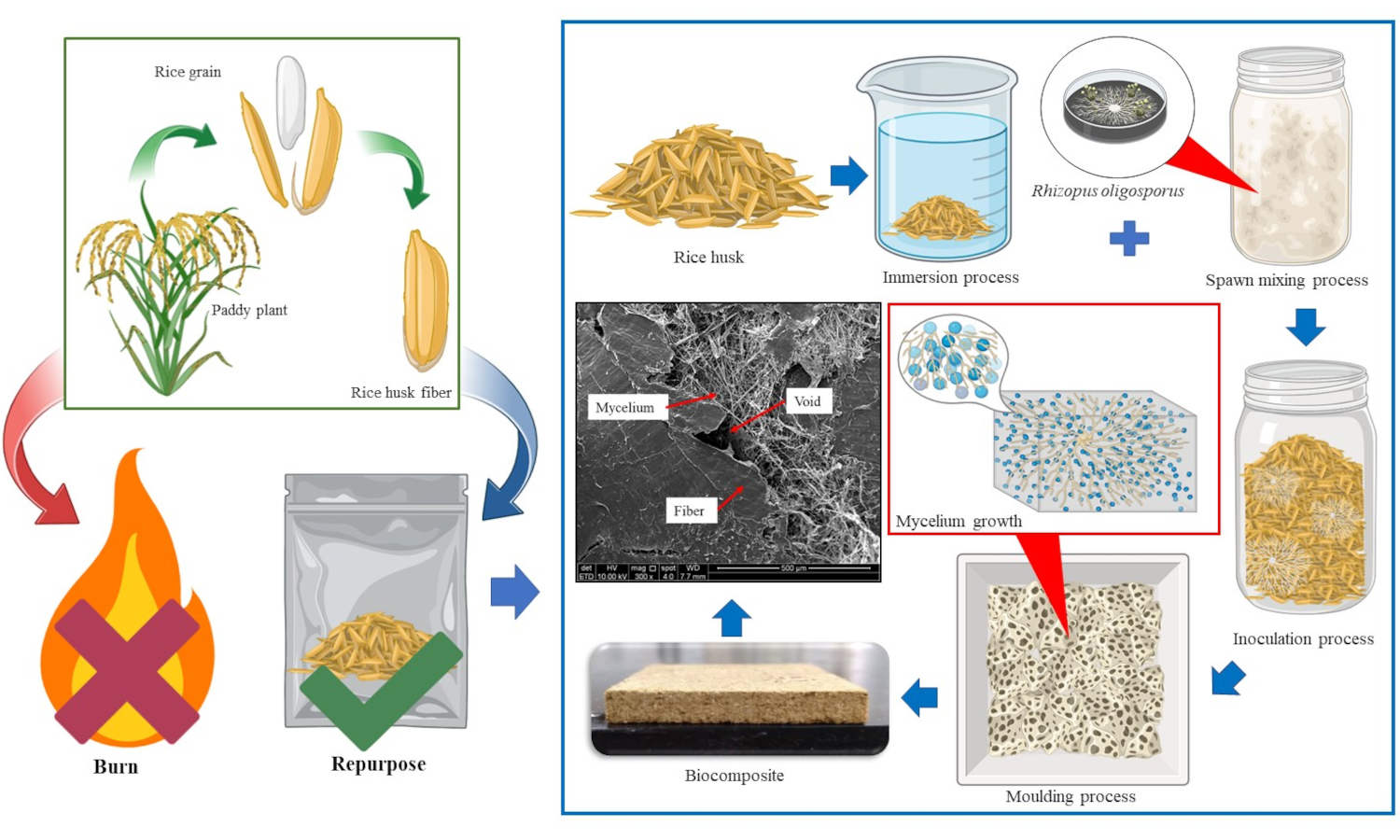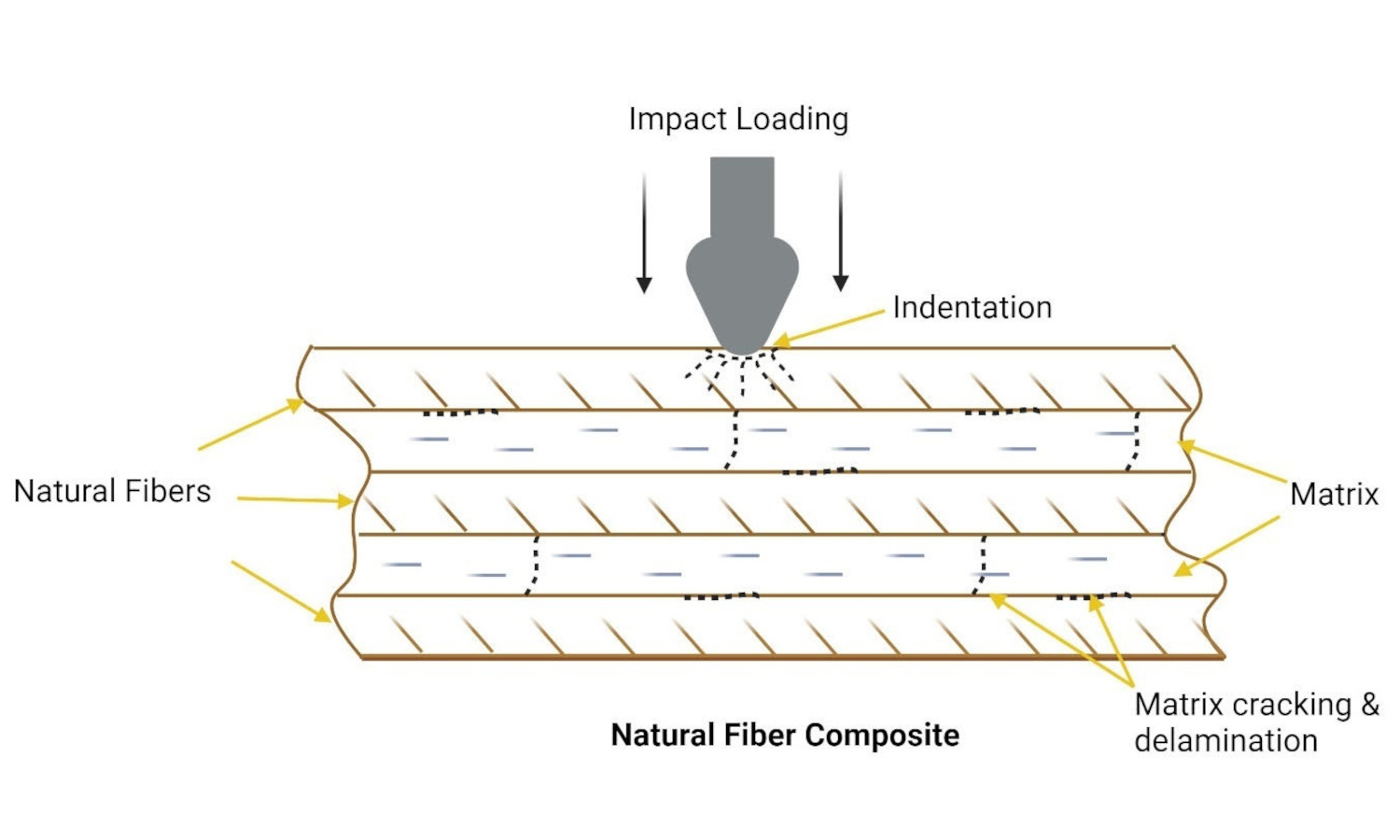Development and characterization of fiber-reinforced biopolymer composites from rice husk waste with Rhizopus oligosporus as a bio-binder
Mohammad Aliff Shakir, Mardiana Idayu Ahmad, Azniwati Abd Aziz, Abdul Khalil H.P.S.
Vol. 19., No.9., Pages 893-908, 2025
DOI: 10.3144/expresspolymlett.2025.68
DOI: 10.3144/expresspolymlett.2025.68
GRAPHICAL ABSTRACT

ABSTRACT
The growing demand for eco-friendly alternatives to synthetic polymers has accelerated interest in fibrous, cellulose-rich waste as a foundation for sustainable composite materials. Agricultural waste like rice husk offers abundant, renewable sources of natural polymers suitable for advanced biocomposite development. However, the integration of such materials often requires innovative bonding approaches, particularly those that are biodegradable and derived from renewable sources. This study explores the use of rice husk fibers with Rhizopus oligosporus mycelium as a bio-binder by examining how varying inoculation durations (0, 2, 4, and 6 days) affect the mechanical and physical characteristics of the composite. The prepared samples underwent hot pressing at 130°C and 5 MPa for 30 min. Visual and morphological analyses confirmed that longer inoculation periods promoted denser and more uniform mycelial growth, improving adhesion within the composite matrix. Results revealed that the composite with 4 days of inoculation exhibited the best overall physical and mechanical properties with flexural strength (5.79 MPa), tensile strength (2.59 MPa), water absorption (112.1%), contact angle (39.99°) and thickness swelling (126.33%). These findings demonstrate the feasibility of repurposing cellulose-rich agricultural waste into functional fibrous polymer composites, supporting sustainable material development and contributing to polymer recycling efforts.
RELATED ARTICLES
Timothy K. Mulenga, Sanjay Mavinkere Rangappa, Suchart Siengchin
Vol. 19., No.5., Pages 470-493, 2025
DOI: 10.3144/expresspolymlett.2025.35
Vol. 19., No.5., Pages 470-493, 2025
DOI: 10.3144/expresspolymlett.2025.35

Natural fiber composites (NFC) have emerged as promising sustainable alternatives to conventional synthetic materials due to the increasing environmental concerns and unsustainable reliance on depleting petroleum resources. NFCs offer various advantages, such as reduced costs, low density, biodegradability, and good specific mechanical properties. However, their impact resistance remains a crucial factor that greatly influences their suitability for sectors like automotive, construction, and aerospace, where impact loading is prevalent. This review comprehensively analyzes the impact resistance of NFCs, aiming to elucidate the factors governing their behavior under varying impact loading conditions. The study delves into the influence of key parameters such as fiber type, matrix properties, and fiber-matrix adhesion on the impact response of NFCs. Different impact loading methods, including low-velocity impact and high-velocity impact, are examined, highlighting their distinct effects on NFC failure mechanisms. Furthermore, the review investigates the effectiveness of various methods employed to enhance the impact strength of NFCs. Finally, it identifies current challenges and limitations associated with impact-resistant NFCs and outlines potential future research directions to overcome these obstacles and unlock the full potential of these sustainable materials.



